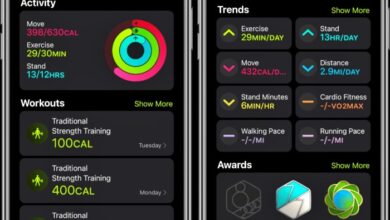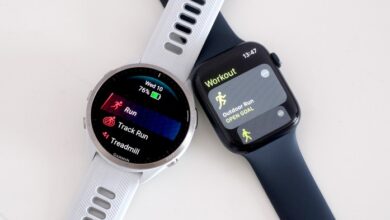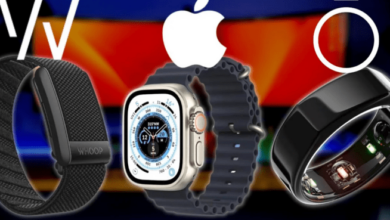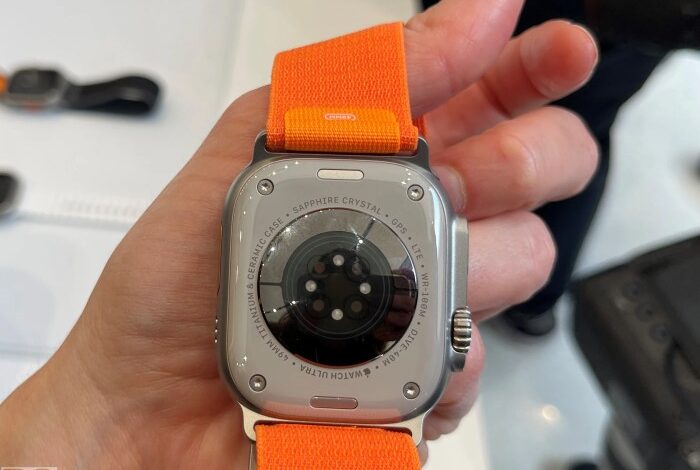
Masimo CEO Claims Apple Watch Blood Oxygen Sensors Are Inaccurate
Masimo CEO claims the Apple Watch blood oxygen sensors are inaccurate and that users will be better off without them. This bold statement has sparked a heated debate in the tech and medical worlds, raising questions about the reliability of consumer-grade health trackers.
Masimo, a leading medical device company, is known for its advanced pulse oximetry technology, which is widely used in hospitals. The company’s CEO, Joe Kiani, has publicly criticized Apple’s blood oxygen sensor technology, arguing that it lacks the accuracy and reliability needed for accurate health monitoring.
This claim has been met with skepticism from some quarters, with Apple defending the accuracy of its sensor and highlighting its regulatory approvals.
At the heart of this controversy lies the question of whether consumer-grade wearable devices can provide reliable health data. While Apple Watch blood oxygen sensors have gained popularity for their convenience and accessibility, Masimo argues that their accuracy falls short of medical-grade devices.
This debate raises important questions about the future of health monitoring and the role of wearable technology in healthcare.
Masimo’s Statement and Controversy
Masimo, a leading medical device company specializing in non-invasive monitoring technologies, has ignited a public debate by publicly criticizing the accuracy of Apple Watch blood oxygen sensors. This statement, made by Masimo’s CEO Joe Kiani, has sparked controversy and raised concerns about the reliability of wearable health trackers.
Masimo’s Claims
Masimo’s CEO has claimed that Apple Watch blood oxygen sensors are inaccurate and unreliable. He has asserted that the sensors may provide misleading readings, potentially leading to misdiagnosis and inappropriate medical interventions. Masimo argues that the technology used in Apple Watch is not as sophisticated as the medical-grade sensors they develop and manufacture.
Potential Impact on Public Perception
Masimo’s claims have the potential to significantly impact public perception of Apple Watch health features. Users may become hesitant to rely on the device for accurate blood oxygen readings, especially for medical decision-making. This could erode trust in Apple Watch’s health monitoring capabilities and potentially hinder the adoption of wearable health technologies.
Key Arguments Presented by Masimo
Masimo has presented several key arguments to support their claims:
- Limited Accuracy:Masimo argues that Apple Watch blood oxygen sensors lack the precision and accuracy of medical-grade devices. They point to studies and clinical trials that suggest a significant margin of error in Apple Watch readings, particularly in certain patient populations.
- Potential for Misdiagnosis:Masimo contends that inaccurate blood oxygen readings could lead to misdiagnosis and inappropriate medical interventions. They emphasize the importance of relying on validated and accurate monitoring technologies for critical health decisions.
- Lack of Regulatory Approval:Masimo highlights that Apple Watch blood oxygen sensors have not received the same level of regulatory scrutiny as medical-grade devices. They argue that this lack of oversight raises concerns about the reliability and safety of the technology.
Blood Oxygen Measurement Technology
The recent controversy surrounding Apple Watch’s blood oxygen sensors has brought the accuracy of wearable health technology into the spotlight. While Apple claims its sensors provide reliable readings, Masimo, a leading medical device company, argues that the technology is inaccurate and potentially misleading.
This debate highlights the importance of understanding the different technologies used for blood oxygen measurement and their respective limitations.
Comparison of Technologies
Both Masimo and Apple utilize different technologies to measure blood oxygen levels, each with its own strengths and weaknesses. Masimo employs a technology called pulse oximetry, while Apple relies on photoplethysmography (PPG).
- Pulse Oximetry:This technology measures blood oxygen saturation (SpO2) by shining red and infrared light through the skin and analyzing the amount of light absorbed by the blood. The difference in absorption between the two wavelengths indicates the percentage of oxygenated hemoglobin in the blood.
- Photoplethysmography (PPG):PPG measures blood volume changes in the tissue by shining light through the skin and detecting the reflected light. The amount of light absorbed and reflected varies with blood volume, which can be used to infer heart rate and blood oxygen levels.
Scientific Principles and Limitations
Both pulse oximetry and PPG rely on the principle of light absorption and reflection by blood. However, their methods differ significantly, leading to varying levels of accuracy and limitations.
- Pulse Oximetry:This technology is highly accurate in clinical settings and is considered the gold standard for blood oxygen measurement. However, it can be affected by factors such as skin pigmentation, nail polish, and movement, which can interfere with light transmission.
Masimo’s CEO is making waves with his claims about the accuracy of Apple Watch blood oxygen sensors, even going so far as to suggest users would be better off without them. While I’m not a medical professional, it’s interesting to consider the potential implications.
And while we’re on the topic of tech, sure you could buy some AirPods this Prime Day, but what about these alternatives ? Maybe we should be focusing on the bigger picture and ensuring our tech is actually serving us, rather than just being another shiny gadget.
Ultimately, it’s up to each individual to decide what they prioritize when it comes to health and technology.
- Photoplethysmography (PPG):While PPG is a relatively simple and non-invasive technique, it is less accurate than pulse oximetry. This is because it relies on indirect measurements and can be influenced by factors like skin tone, ambient light, and the user’s position.
Independent Studies and Research
Several independent studies and research have been conducted to evaluate the accuracy of both Masimo and Apple Watch blood oxygen sensors. The results have been mixed, with some studies showing good correlation with traditional pulse oximetry devices, while others highlight significant discrepancies.
- Masimo:Studies have generally shown that Masimo’s pulse oximetry technology is highly accurate in clinical settings. However, some studies have noted that the accuracy can be affected by factors such as skin pigmentation and movement.
- Apple Watch:Research on Apple Watch’s blood oxygen sensors has shown varying results. Some studies have reported good correlation with pulse oximetry devices, while others have identified significant discrepancies, particularly in individuals with darker skin tones or those with certain medical conditions.
Regulatory Approvals and Standards
The accuracy claims and intended use of blood oxygen sensors are heavily influenced by the regulatory approvals and standards they must meet. Medical devices, like Masimo’s products, are subject to rigorous regulations to ensure their safety and effectiveness, while consumer-grade devices like the Apple Watch face less stringent requirements.
Understanding these regulatory differences is crucial to evaluating the accuracy claims and intended use of blood oxygen sensors in both medical and consumer settings.
Regulatory Landscape for Medical Devices
Medical devices are regulated by agencies like the Food and Drug Administration (FDA) in the United States and the European Medicines Agency (EMA) in Europe. These agencies establish strict standards for device design, manufacturing, testing, and labeling. Medical devices are categorized into classes based on their risk to patients, with Class III devices, such as implantable pacemakers, facing the most stringent regulations.
“The FDA’s mission is to promote and protect public health by helping ensure the safety, effectiveness, and security of human and veterinary drugs, biological products, medical devices, our nation’s food supply, cosmetics, and products that emit radiation.”
Regulatory Landscape for Consumer Devices
Consumer-grade devices, like the Apple Watch, are generally subject to less stringent regulations than medical devices. While they may need to comply with general safety and electromagnetic compatibility standards, they are not typically required to undergo the same rigorous clinical trials and post-market surveillance as medical devices.
“The Federal Communications Commission (FCC) regulates radio frequency (RF) emitting devices, such as cell phones, Bluetooth devices, and Wi-Fi routers, to ensure that they do not interfere with other electronic devices.”
The Masimo CEO’s claims about the Apple Watch’s blood oxygen sensor accuracy are definitely sparking debate, but honestly, I’m more focused on the practical side of things. For my retail business, I need a reliable POS system to handle transactions and inventory, and that’s where I’m looking for the best solutions – like those reviewed on this website.
While the Apple Watch debate is interesting, ensuring my store runs smoothly is a much higher priority right now!
Influence of Regulations on Accuracy Claims and Intended Use
The regulatory landscape significantly influences the accuracy claims and intended use of blood oxygen sensors. Medical devices, subject to rigorous testing and approval processes, can make more specific and reliable claims about accuracy. They are also intended for use in clinical settings where healthcare professionals interpret and use the data for diagnosis and treatment.
Consumer devices, facing less stringent regulations, may make more general claims about accuracy and are primarily intended for general wellness monitoring.
“The FDA requires medical devices to undergo clinical trials to demonstrate their safety and effectiveness. These trials must be designed to provide reliable data on the device’s accuracy, performance, and potential risks.”
The Masimo CEO’s claims about the Apple Watch’s blood oxygen sensors being inaccurate have sparked a debate, but one thing is certain: protecting your online privacy is crucial. If you’re concerned about your data being tracked, consider using a best no log vpn to encrypt your internet traffic and ensure your online activities remain private.
This way, you can focus on your health without worrying about your data being compromised, even if you choose to use a smartwatch for health monitoring.
Differences in Regulatory Requirements
The table below summarizes the key differences in regulatory requirements between medical and consumer devices:
| Characteristic | Medical Devices | Consumer Devices |
|---|---|---|
| Regulatory Oversight | FDA, EMA, etc. | FCC, general safety standards |
| Pre-Market Approval | Required, with clinical trials | Generally not required |
| Post-Market Surveillance | Required, to monitor safety and effectiveness | Limited or not required |
| Accuracy Claims | Specific and validated | General and less stringent |
| Intended Use | Diagnosis and treatment | General wellness monitoring |
Consumer Perspective and Implications: Masimo Ceo Claims The Apple Watch Blood Oxygen Sensors Are Inaccurate And That Users Will Be Better Off Without Them
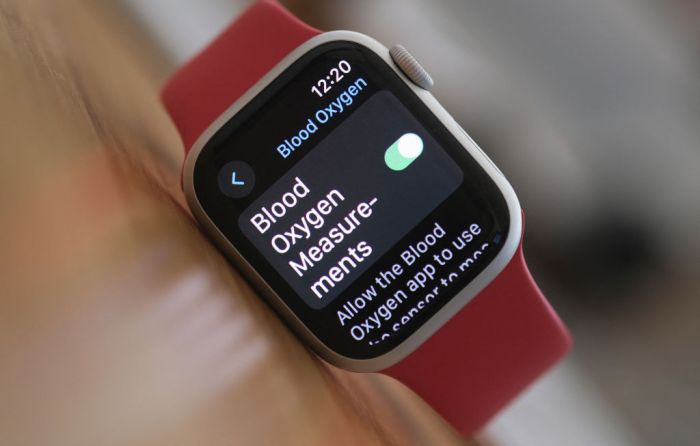
The debate surrounding the accuracy of Apple Watch blood oxygen sensors raises important questions for consumers. While the convenience of monitoring blood oxygen levels at home is appealing, it’s crucial to understand the potential risks and benefits before relying on these devices for health decisions.
Potential Risks and Benefits of Relying on Apple Watch Blood Oxygen Sensors
The availability of consumer-grade blood oxygen sensors offers potential benefits for health monitoring. Users can track their oxygen saturation levels over time, potentially identifying trends or abnormalities that might require medical attention. However, relying solely on these devices for health management comes with inherent risks.
- Accuracy and Reliability:While Apple claims its sensors meet FDA requirements, independent studies have shown varying levels of accuracy compared to medical-grade devices. This discrepancy can lead to misinterpretations of readings, potentially delaying necessary medical interventions.
- Over-reliance and Self-Diagnosis:The ease of access to blood oxygen data can lead to over-reliance on the device for self-diagnosis. Users might misinterpret readings or make hasty decisions without consulting a healthcare professional, potentially jeopardizing their health.
- Limited Functionality:Consumer-grade devices typically lack the comprehensive features and functionalities of medical-grade pulse oximeters. They may not be able to detect all types of oxygen saturation abnormalities or provide accurate readings in all situations.
Ethical Considerations Surrounding the Use of Consumer-Grade Devices for Medical Diagnosis
The use of consumer-grade devices for medical diagnosis raises ethical concerns. While these devices can provide valuable insights into health trends, they are not substitutes for professional medical evaluation.
- Informed Consent and Data Privacy:Consumers should be fully informed about the limitations and potential risks of using consumer-grade devices for health monitoring. Additionally, data privacy concerns arise, as these devices collect sensitive health information that could be misused or compromised.
- Responsibility and Liability:The responsibility for interpreting data and making health decisions rests primarily with the individual. However, the manufacturers of these devices also bear some responsibility for ensuring their products are safe and accurate. Questions arise regarding liability in case of misdiagnosis or harm caused by inaccurate readings.
- Over-reliance and Medical Professional-Patient Relationship:The accessibility of consumer-grade devices might lead to a decline in the quality of the medical professional-patient relationship. Patients might rely solely on device readings and avoid seeking professional medical advice, potentially hindering proper diagnosis and treatment.
Recommendations for Consumers Regarding the Appropriate Use of Blood Oxygen Sensors
Consumers should approach the use of blood oxygen sensors with caution and awareness of their limitations.
- Consult with a Healthcare Professional:Always consult with a doctor or other healthcare professional before using a blood oxygen sensor for health monitoring. They can advise on the appropriate use of the device and interpret readings in the context of your individual health history and needs.
- Understand the Device’s Limitations:Be aware of the accuracy limitations and potential sources of error associated with consumer-grade blood oxygen sensors. These devices are not intended to replace medical-grade equipment or professional diagnosis.
- Monitor for Changes and Consult with a Doctor:Use the device to track your oxygen saturation levels over time and look for any significant changes or trends. If you notice any unusual readings or experience any health concerns, consult with your doctor promptly.
Future of Blood Oxygen Monitoring
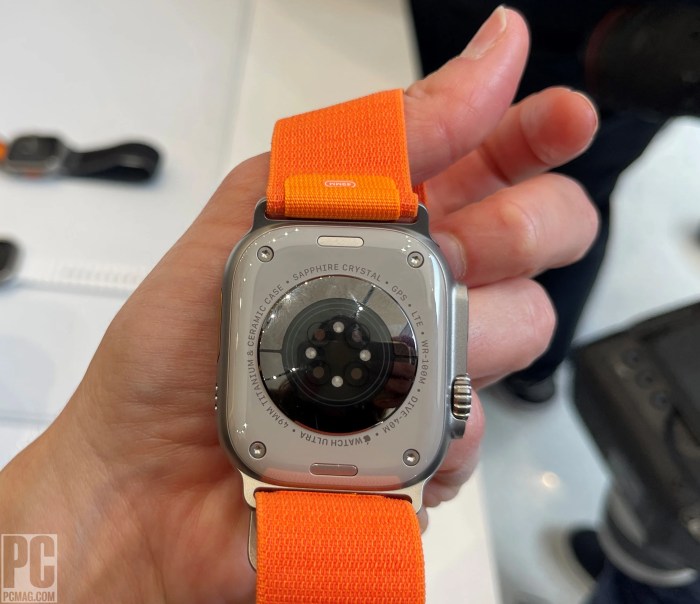
The debate surrounding the accuracy of blood oxygen sensors in consumer devices like smartwatches has highlighted the evolving landscape of blood oxygen monitoring technology. While current technology faces challenges, the future holds significant promise for advancements that could revolutionize both medical and consumer applications.
Advancements in Blood Oxygen Monitoring Technology
Advancements in blood oxygen monitoring technology are poised to address current limitations and expand the scope of its applications. These advancements encompass both hardware and software innovations, aiming to enhance accuracy, accessibility, and user-friendliness.
- Non-invasive Sensors:The development of more accurate and reliable non-invasive sensors is a key area of focus. Researchers are exploring new sensor technologies, such as photoplethysmography (PPG) with advanced algorithms, to improve signal quality and minimize interference from factors like movement and skin pigmentation.
- Miniaturization and Integration:Advancements in microelectronics and sensor design are enabling the development of smaller, more portable blood oxygen monitoring devices. This miniaturization allows for seamless integration into wearable devices like smartwatches and fitness trackers, making continuous monitoring more convenient and accessible.
- Improved Algorithms:Sophisticated algorithms are being developed to analyze and interpret blood oxygen data more effectively. These algorithms can account for individual variations and environmental factors, leading to more accurate and personalized readings.
- Real-time Monitoring and Alerts:Real-time monitoring capabilities allow for continuous tracking of blood oxygen levels and the generation of alerts in case of significant changes or potential health risks. This continuous monitoring can empower individuals to proactively manage their health and seek medical attention when necessary.
Role of Wearable Devices and Artificial Intelligence, Masimo ceo claims the apple watch blood oxygen sensors are inaccurate and that users will be better off without them
Wearable devices are playing an increasingly important role in expanding the reach and accessibility of blood oxygen monitoring. The integration of blood oxygen sensors into smartwatches and fitness trackers allows for continuous monitoring in everyday settings, enabling individuals to gain insights into their health and well-being.
- Enhanced Accuracy through AI:Artificial intelligence (AI) is being leveraged to improve the accuracy of blood oxygen measurements from wearable devices. AI algorithms can analyze large datasets of sensor data, identify patterns, and adjust for individual variations and environmental factors. This can lead to more reliable and personalized blood oxygen readings.
- Early Detection and Intervention:AI-powered wearable devices can facilitate early detection of health issues related to blood oxygen levels. By analyzing trends in blood oxygen data over time, AI algorithms can identify potential problems before they become severe, enabling timely intervention and potentially preventing complications.
- Remote Monitoring and Telemedicine:Wearable devices with blood oxygen monitoring capabilities can be used for remote patient monitoring and telemedicine. Data from these devices can be transmitted to healthcare providers, allowing for continuous monitoring and virtual consultations, especially for individuals with chronic conditions or those living in remote areas.
Hypothetical Scenario: The Impact of Advancements
Imagine a future where everyone has access to affordable, accurate, and continuous blood oxygen monitoring through wearable devices. This technology could empower individuals to take control of their health and make informed decisions about their lifestyle choices.
- Early Detection of Sleep Apnea:Wearable devices could detect episodes of low blood oxygen levels during sleep, potentially leading to earlier diagnosis and treatment of sleep apnea, a condition that can significantly impact health and quality of life.
- Personalized Fitness and Wellness:Blood oxygen data could be integrated into fitness apps, providing insights into training intensity and recovery needs. This personalized approach could optimize fitness routines and prevent overexertion.
- Improved Management of Chronic Conditions:For individuals with chronic conditions like heart disease or lung disease, continuous blood oxygen monitoring could provide valuable data for healthcare providers, enabling more effective management of their conditions.
- Enhanced Public Health Awareness:The widespread adoption of blood oxygen monitoring devices could lead to increased public awareness of the importance of blood oxygen levels and the factors that can affect them. This could encourage healthier lifestyle choices and proactive health management.


